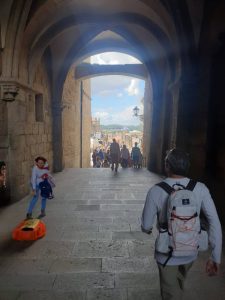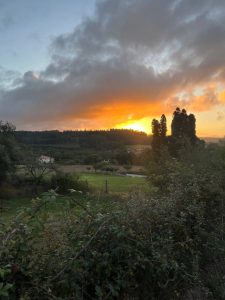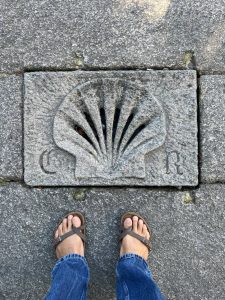“What is humanity, really, but a family of families?” ~ Vivek Murthy (US Surgeon General)
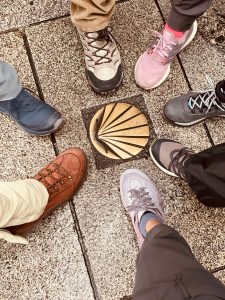
In a recent article in The Atlantic on friendship, the author notes, “In the hierarchy of relationships, friendships are at the bottom. Romantic partners, parents, children—all these come first. Friendships are unique relationships because unlike family relationships, we choose to enter into them. And unlike other voluntary bonds, such as marriages and romantic relationships, they lack a formal structure.”
This latest camino desert odyssey was with 6 friends. As it was a second passage (all having been for the first passage over the past few years, though most did not know each other), I knew each of them and have the privilege of calling them friends. It was a choice each made to be on the camino, albeit with some reserve on the part of some. Because it was voluntary, both to be together and to be walking over a hundred kilometres, it was thus enlivening. We chose to be with each other, planting one step in front of the other for close to 200,000 steps over 6 days. Perhaps, paradoxically that friendships are at the bottom of the relational hierarchy, they have the most potential for growth. I’m Exhibit A in having to live that reality especially after the significant pivot in my life in 2014.
Upon arrival in transit, a companion sojourner and I were offloaded due to a late inbound, to another flight, delaying our arrival by 6 hours. Upon arrival in Santiago, her bag arrived but mine didn’t. This is a peregrino’s (camino pilgrim’s) worse nightmare as all that’s critical for walking the camino was in the misplaced/delayed luggage. My despair led me to blurt out immaturely, “I can’t @#*^# do this! I don’t want to do this anymore!”
Walking in borrowed shoes
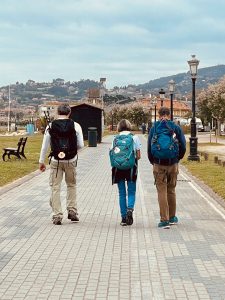
Lesson one in walking at the speed of friendship – gratitude and reliance. What are the odds that one of the sojourners would have an extra pair of hiking shoes that fit my feet exactly (he was the only other male in the group), with the accompanying merino wool socks to wick away moisture and lessen friction that often result in blisters? Yes, amid my devastation, I was the immensely grateful recipient of a pair of borrowed shoes (and socks). I have divested myself of much of my material possessions since August 2014, and this was another lesson in the journey of faith and often, the reliance on others for provision.
Each step I took, was a step of grateful humility. The most critical equipment on the camino – shoes and socks – were graciously provided. I was reminded that I am a sojourner here on earth. What is mine is not mine and even if it is, it’s temporal. I am merely a steward – what I have is borrowed. Walking this earth on the camino in borrowed shoes reminded me to be grateful for the gift of feet with which to be able to wear shoes, the strength to be able to walk, and the gracious generosity of a friend in whose borrowed shoes I walked.

Walking amidst intense emotions
Two days after embarking on the camino, I received notification that my bag had been located and was being delivered. In the pouring rain, I chased down the van that held my precious luggage, till it turned the corner and sped off. Through the help of a friend in the UK who was able to track the driver down (I was in Spain), I was able to receive my luggage a few hours later. In between awaiting the delivery of my bag and dinner, I received a letter from someone very dear to me that left me utterly gutted and devastated. I could not bring myself to joining the sojourners for dinner even though I was their guide.
Eventually, as the turmoil of emotions quelled, and amidst the supportive texts from the camino sojourners, I did join them for dinner. Lesson two in walking at the speed of friendship is the liberation of being accepted in whatever state I was in (and it was a terrible state), without judgement or even seeking to advise or help. Yet, precisely because of the unconditionality of love and friendship, I wanted to be better than the state I was in – for them, but more significantly, for me.
The rhythm of the camino, the rhythm of walking is that when one leg moves forward, the other lags and rests. This is also the rhythm of true friendship – the alternating of community and solitude. Ken Nerburn saliently notes, “In the same way that music is made alive by the silence that surrounds the notes, a day comes alive by the silence that surrounds our actions.” Friendship is made alive by the silence (often in solitude) that surrounds community.
Walking betwixt the question and the ‘quest-I’m-on’
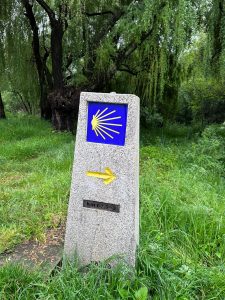
The camino marker that points in the direction the pilgrim is to take is often the only means of navigating. GPS is often unavailable as the cell signal on the camino is sporadic. Even if it were available, GPS takes you on the shortest route, which is often along the road or highway – the last place you want to be walking the camino. Yet, these camino markers are only visible within a few metres of a fork or crossroads (I am convinced this is an intentional design).
Our human tendency is to want to figure the way we should go often way ahead of the time we need to know. There is a place for that in some instances, but not in all. When we are overly concerned about the future, we miss the present. We miss the beauty that surrounds us. We miss the people in our lives. We may even miss our lives even as we’re living it. The question that preoccupies us of which direction to go (when we are walking at the speed of life and friendship), way ahead of when we need to know it, blurs the present because it is too focussed on the future.
Lesson three of walking at the speed of friendship on the camino – whether of Santiago or of Life – is to be present to the present, to enjoy who and what is with us even as we make our way toward what lies ahead of us. To live the space between the question and the eventual answer is to fully immerse oneself into, what a sojourner so poignantly and insightfully put it, is the ‘quest-I’m-on’. There is more to be discovered in this space that in the eventual answer.
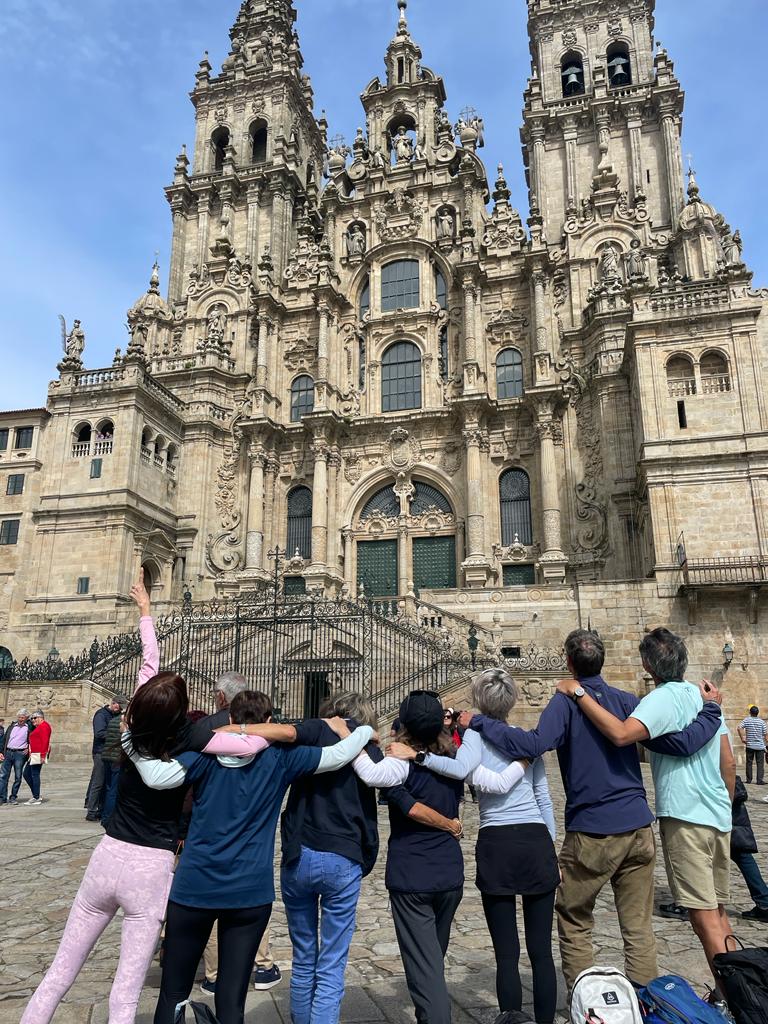 The lessons of friendship didn’t end with the camino. The end of the Camino Santiago is the beginning of the Camino of Life. Over the course of the month following the Camino Santiago, I was with friends, some of whom I worked with for over 2 decades, others for whom my relationship has morphed from family to friend, others whom I had lost contact with but on this trip, rekindled. Each was an expression of beauty, of unconditional friendship and love, notwithstanding the breach brought about by August 2014 in some of those relationships.
The lessons of friendship didn’t end with the camino. The end of the Camino Santiago is the beginning of the Camino of Life. Over the course of the month following the Camino Santiago, I was with friends, some of whom I worked with for over 2 decades, others for whom my relationship has morphed from family to friend, others whom I had lost contact with but on this trip, rekindled. Each was an expression of beauty, of unconditional friendship and love, notwithstanding the breach brought about by August 2014 in some of those relationships.
Walking at the speed of friendship is about intentionally, with fluidity, mining the essence of these friendships in spite of the inevitable bumps and detours along the way. Walking at the speed of friendship is not obscuring the reasons that led to the breach, but transcending them.



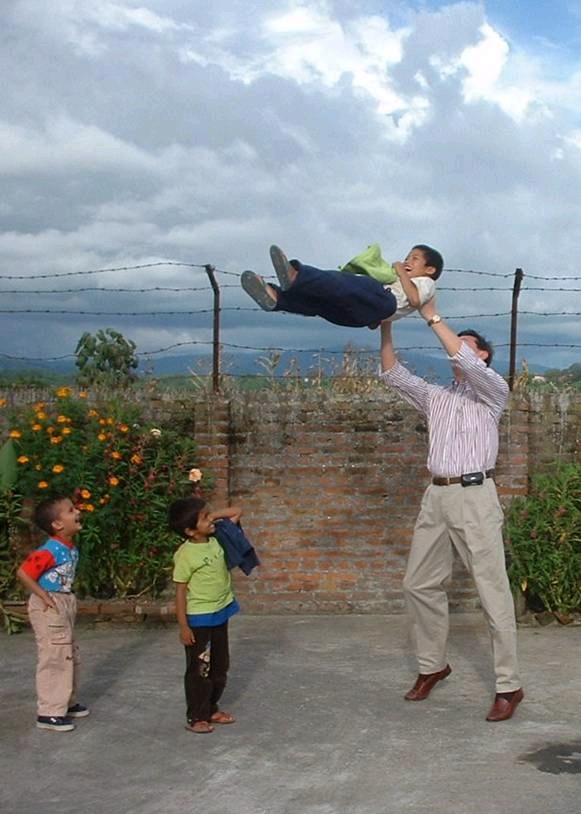
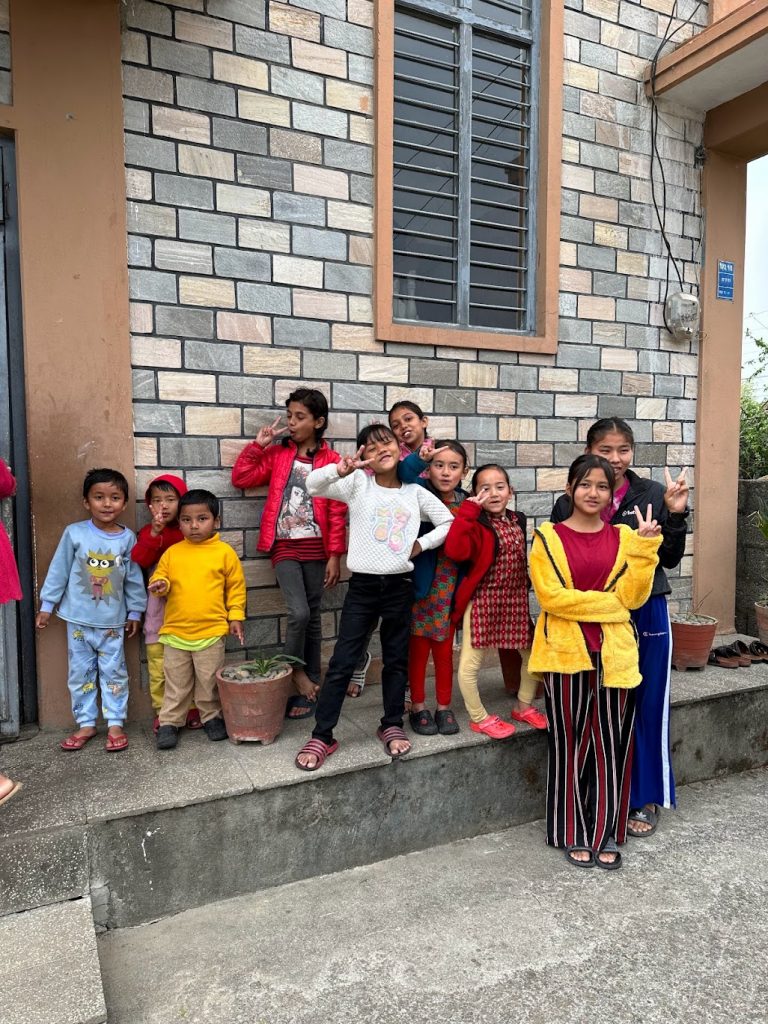
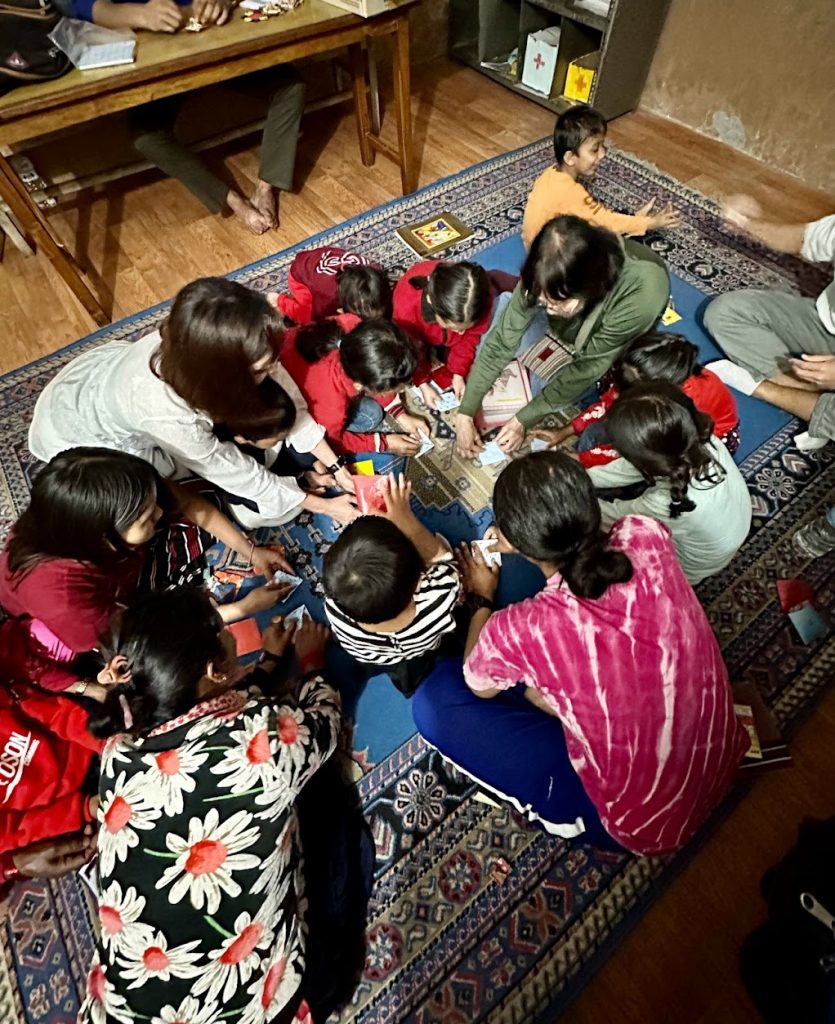
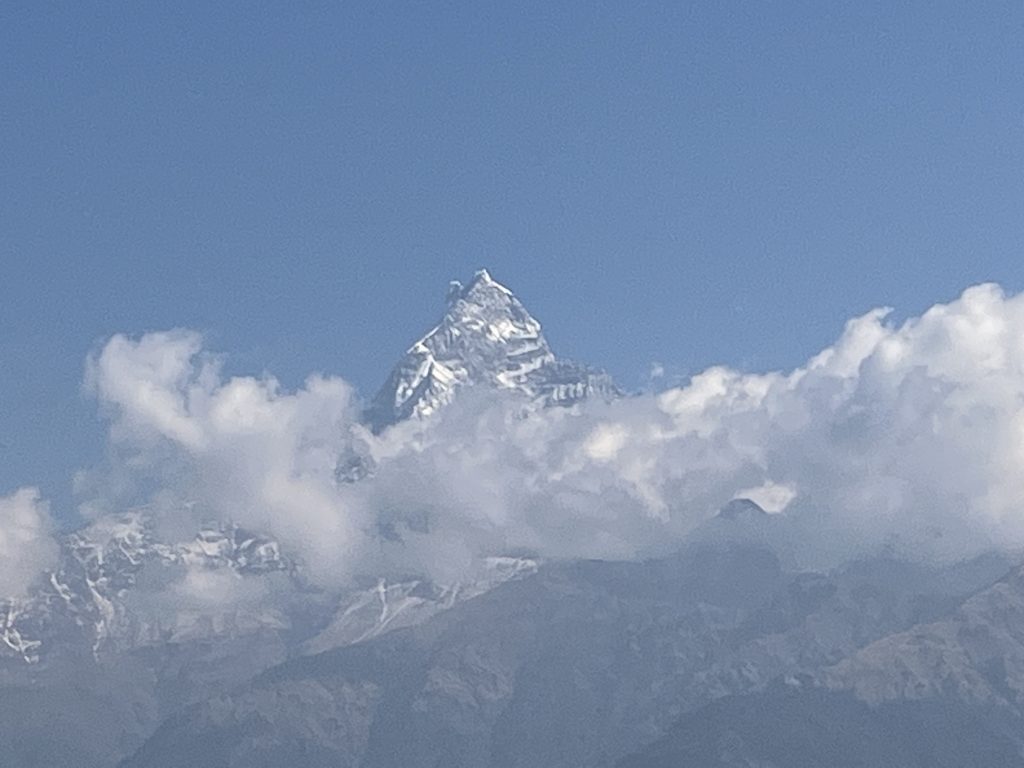
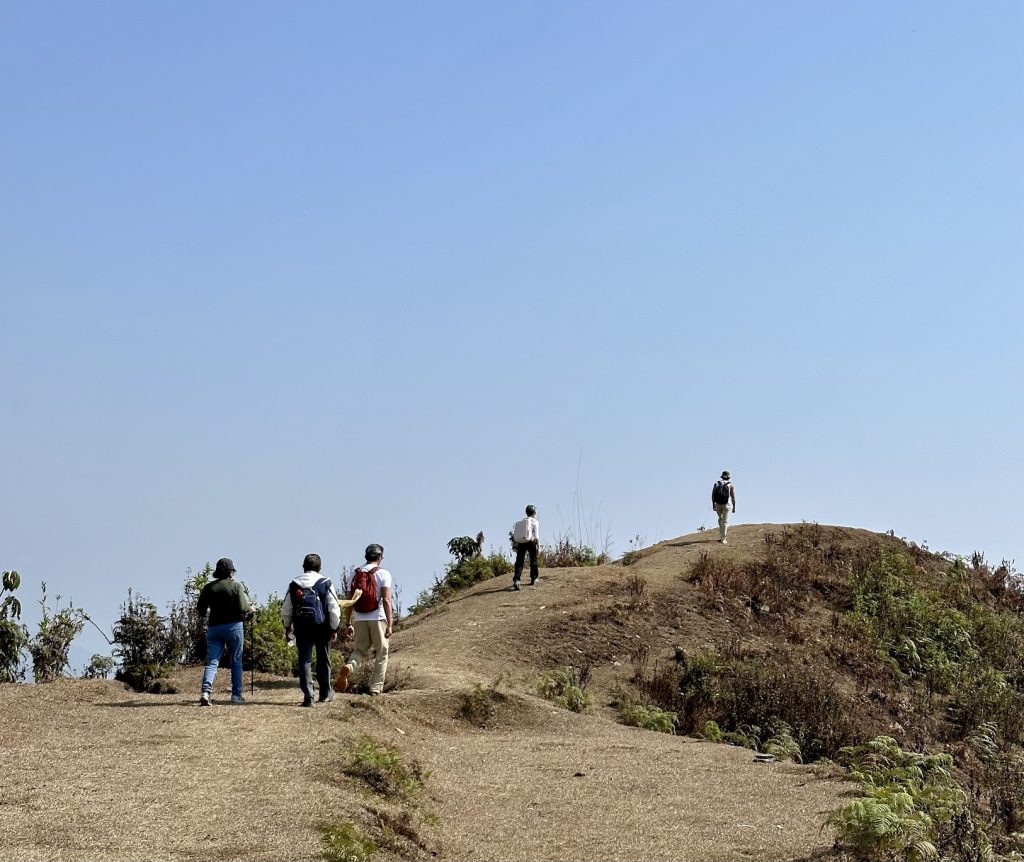

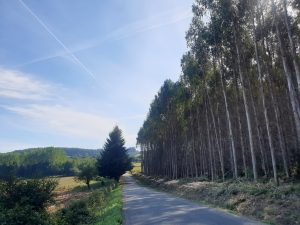

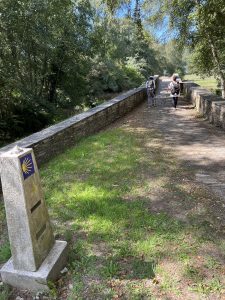
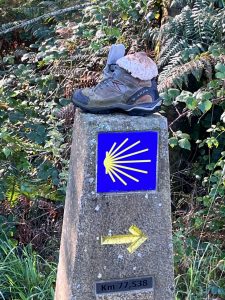 That is the refrain of the busy – we don’t have the time. Walking the Camino is a gift of time serving us, and not the tragic imprisonment of our souls in our serving time. A curious phrase we attribute to those who are incarcerated, yet tragically, could well be spoken of many of us who are physically free, yet not.
That is the refrain of the busy – we don’t have the time. Walking the Camino is a gift of time serving us, and not the tragic imprisonment of our souls in our serving time. A curious phrase we attribute to those who are incarcerated, yet tragically, could well be spoken of many of us who are physically free, yet not.